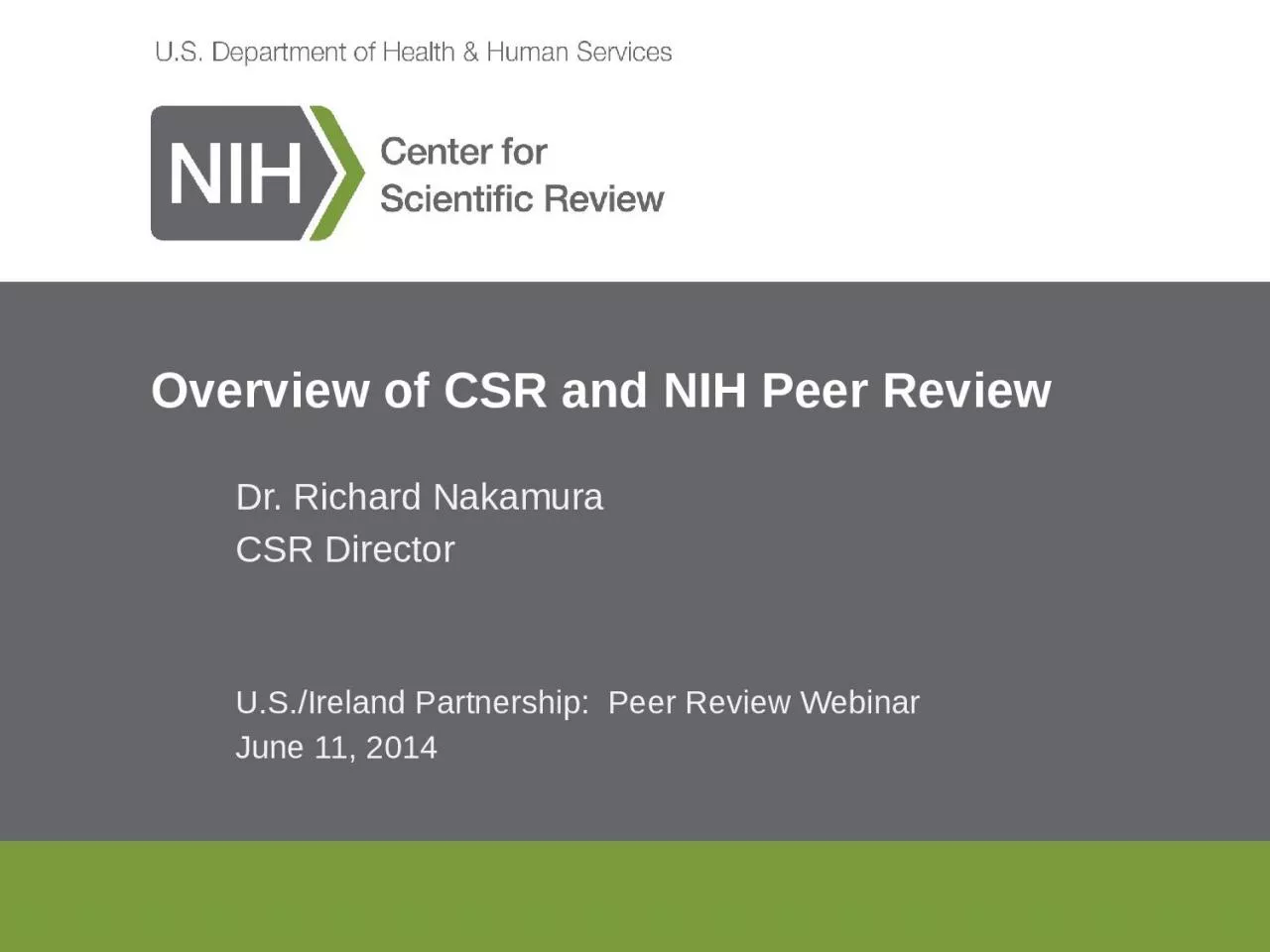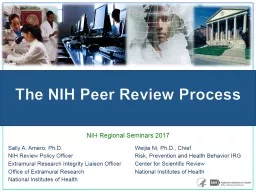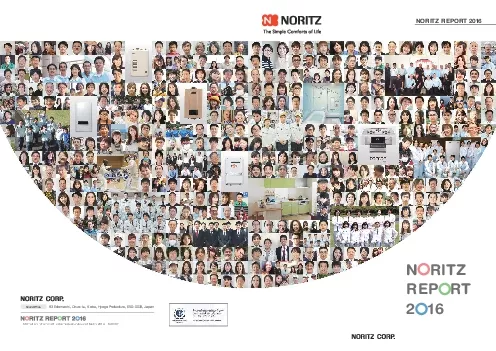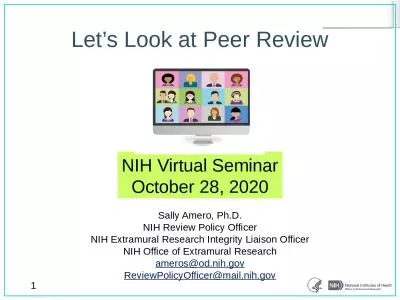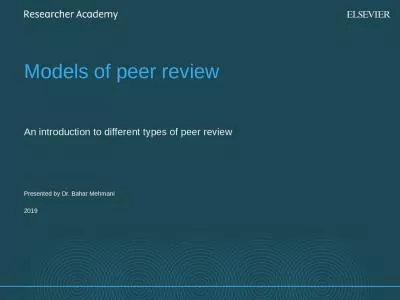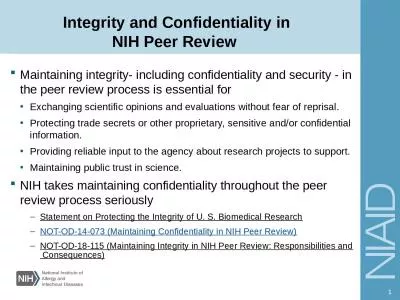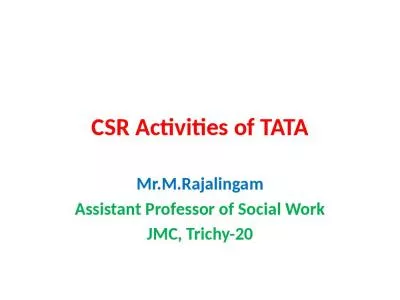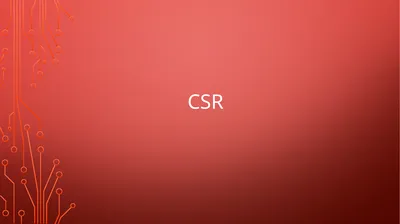PPT-Overview of CSR and NIH Peer Review
Author : Wildboyz | Published Date : 2022-07-28
Dr Richard Nakamura CSR Director USIreland Partnership Peer Review Webinar June 11 2014 National Institutes of Health National Institute on Alcohol Abuse and Alcoholism
Presentation Embed Code
Download Presentation
Download Presentation The PPT/PDF document "Overview of CSR and NIH Peer Review" is the property of its rightful owner. Permission is granted to download and print the materials on this website for personal, non-commercial use only, and to display it on your personal computer provided you do not modify the materials and that you retain all copyright notices contained in the materials. By downloading content from our website, you accept the terms of this agreement.
Overview of CSR and NIH Peer Review: Transcript
Download Rules Of Document
"Overview of CSR and NIH Peer Review"The content belongs to its owner. You may download and print it for personal use, without modification, and keep all copyright notices. By downloading, you agree to these terms.
Related Documents

